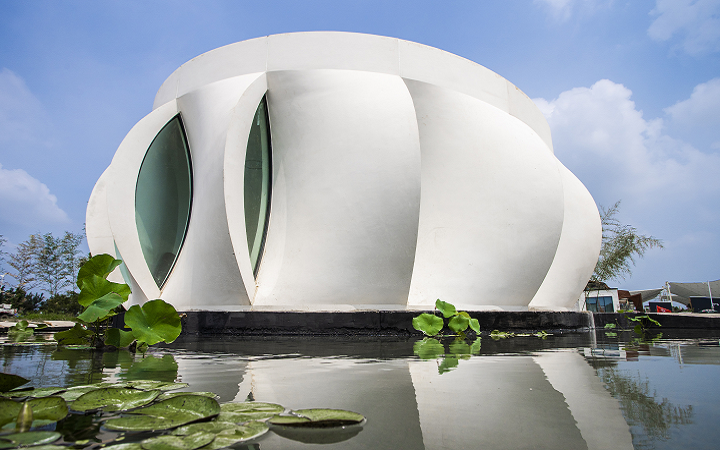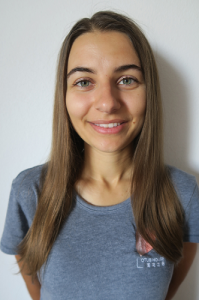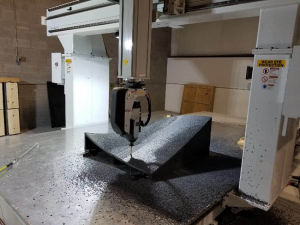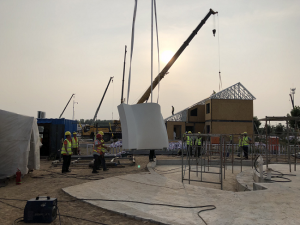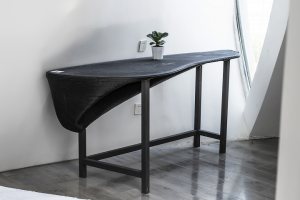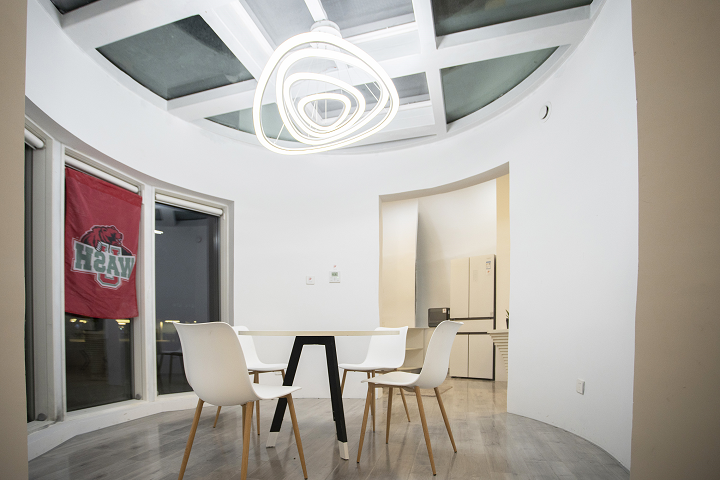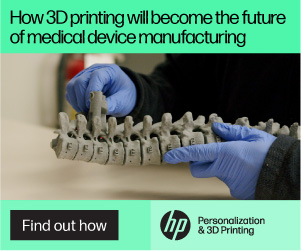Student Competition Team Uses 3D Printing and Design to Build Elements and Furniture for Lotus House
We have plenty of evidence to support the fact that 3D printing is definitely in the running to change the way we construct houses and other structures. For the last eight months, a group of students from Washington University in St. Louis, with support from the university’s International Center for Energy, Environment and Sustainability (InCEES), have been hard at work building the elements for Lotus House – an energy-efficient housing prototype that will compete in the upcoming Solar Decathlon China 2018.
Of course, Team WashU, consisting of students from both the School of Engineering & Applied Science and the Sam Fox School of Design & Visual Arts, is relying on 3D printing to design and fabricate these housing elements for the single-story, 650 square-foot Lotus House. The circular structure is fascinating, made of overlapping curved panels that are set around a main, central axis – just like a lotus flower that’s blossoming.
“We were inspired by the beauty, delicacy and cultural importance of the lotus,” said Lotus House Project Manager Kinga Pabjan, a master’s candidate in architecture and construction management. “But we didn’t start with the lotus. Our initial intention was to use emerging technologies, particularly additive manufacturing, to create organic form. We wanted to challenge the possibilities of 3D printing.
“We also wanted to create an open environment that allows for natural human circulation and promotes healthy feng shui. The floor plan suggests the cycle of daily living: coming home, preparing food, relaxing with others, readying for bed. Curved sliding doors enable occupants to maximize flexibility and change the spatial flow.”
Pabjan said that the Lotus House is the only non-orthogonal design in the Solar Decathlon China, as circular buildings can reduce the amount of wasted space in houses.
While most of the competition projects can take years to complete, Team WashU finished Lotus House in only eight months. The students had prior experience with design-build competitions, having two years preparing and constructing the solar-powered, concrete CRETE House for the 2017 US Solar Decathlon.
- A wall sample being 3D printed by AES.
- The first wall panel arrives on site.
“For Solar Decathlon China, we met twice a week, and more frequently near the end of the spring semester, when we were 3D printing furniture and wall samples,” Pabjan explained.
“Each student focused on a given task: landscape, furniture, interior, structure, etc. We typically worked in pairs, then brought what we produced to the group. Everyone would gather around a large table, with (faculty adviser) Hongxi Yin, to discuss and design together.
“Then, the team had to figure out how to turn that design into reality.”
While still in the US, Team WashU partnered up with Additive Engineering Solutions (AES), headquartered in Akron, Ohio, to 3D print a sample wall framework and some furniture pieces, such as a small side table. Then, once the team arrived in China, the students spent over a month working with Beilida to make the roof and the walls for Lotus House, in addition to finalizing things like the electrical systems, floors, HVAC, and insulation, before starting construction last month.
When asked what inspired Team WashU to 3D print custom frameworks to use as molds for the house’s concrete side panels, Pabjan answered:
“The sustainability benefits. A typical wooden formwork can only be reused two or three times before it’s tossed into a landfill. The initial price of a 3D-printed mold is higher, but it can be reused a hundred times. 3D-printed formworks also create far less waste, use a fraction of the energy and save time, since fabrication can begin as soon as the digital description is created.
“And the design possibilities are practically unlimited! 3D-printed molds eliminate traditional manufacturing-process restrictions. Our exterior roof and wall panels have a unique parabolic design that carries organically to the interior. The panels fit together like overlapping petals.”
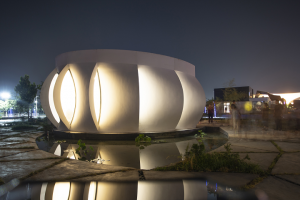 Pabjan says the team learned a lot while working on the project, as many architects “may not fully understand how a building is fabricated” because they aren’t often on the actual construction sites.
Pabjan says the team learned a lot while working on the project, as many architects “may not fully understand how a building is fabricated” because they aren’t often on the actual construction sites.
“So to have this hands-on experience was extremely rewarding,” Pabjan said.
“At this stage in our careers, to be managing actual projects and construction jobs is just invaluable.”
The student members of the WashU team are very proud at how the Lotus House, with its 3D printed elements, turned out in the end.
“Lotus House is extremely ambitious in terms of the technologies used, the complexity of the form and the tight timeline,” Pabjan explained. “We also were trying to push the boundaries of what people are willing to do at Solar Decathlon. And after installing the first wall panel, we knew that it was going to be a success.
“As 3D printing becomes more affordable to the construction industry, I think we’ll see a lot more organic designs produced.”
Discuss this story and other 3D printing topics at 3DPrintBoard.com or share your thoughts in the Facebook comments below.
[Images: Team WashU]Subscribe to Our Email Newsletter
Stay up-to-date on all the latest news from the 3D printing industry and receive information and offers from third party vendors.
You May Also Like
3D Printing News Briefs, April 13, 2024: Robotics, Orthotics, & Hypersonics
In 3D Printing News Briefs today, we’re focusing first on robotics, as Carnegie Mellon University’s new Robotics Innovation Center will house several community outreach programs, and Ugogo3D is now working...
Rail Giant Alstom Saves $15M with 3D Printing Automation Software 3D Spark
3D Spark has entered into a three-year deal with the rail giant Alstom. Alstom, a transport behemoth with annual revenues of $16 billion, specializes in the manufacture of trains, trams,...
Meltio Expands Global Reach with New Partnerships in the Americas and Europe
Spanish 3D printing manufacturer Meltio has expanded its sales network across the globe. With the addition of three new partners in the United States, Brazil, Argentina, and Italy, Meltio aims...
3D Printing Webinar and Event Roundup: April 7, 2024
Webinars and events in the 3D printing industry are picking back up this week! Sea-Air-Space is coming to Maryland, and SAE International is sponsoring a 3D Systems webinar about 3D...


